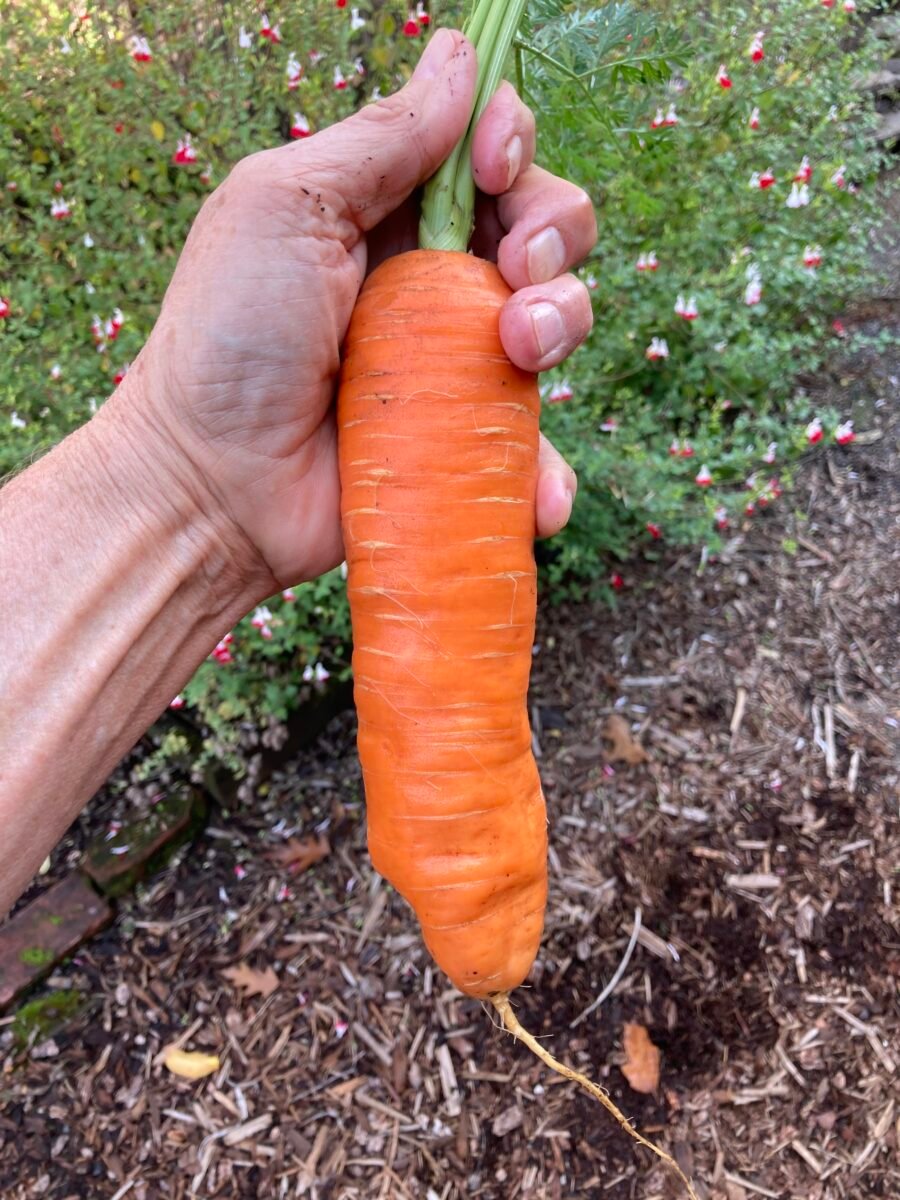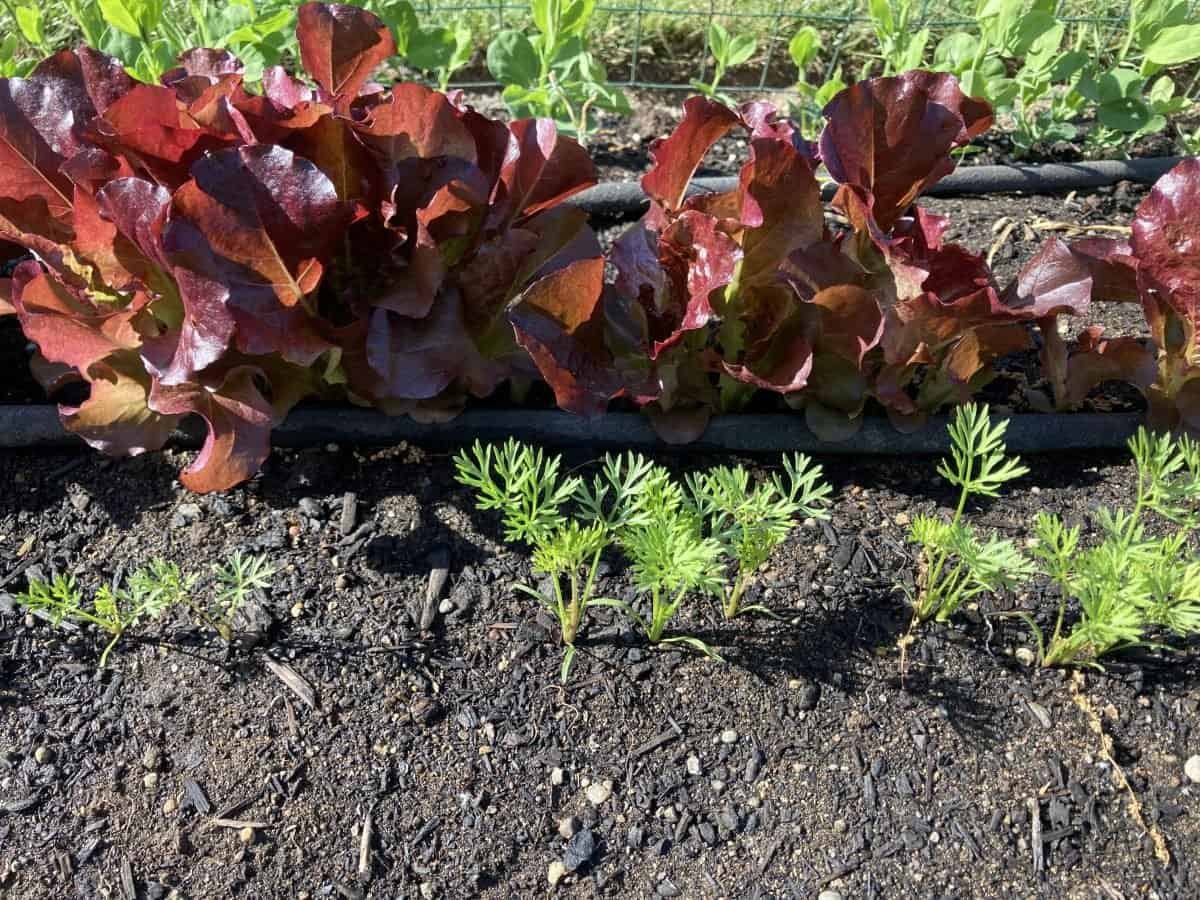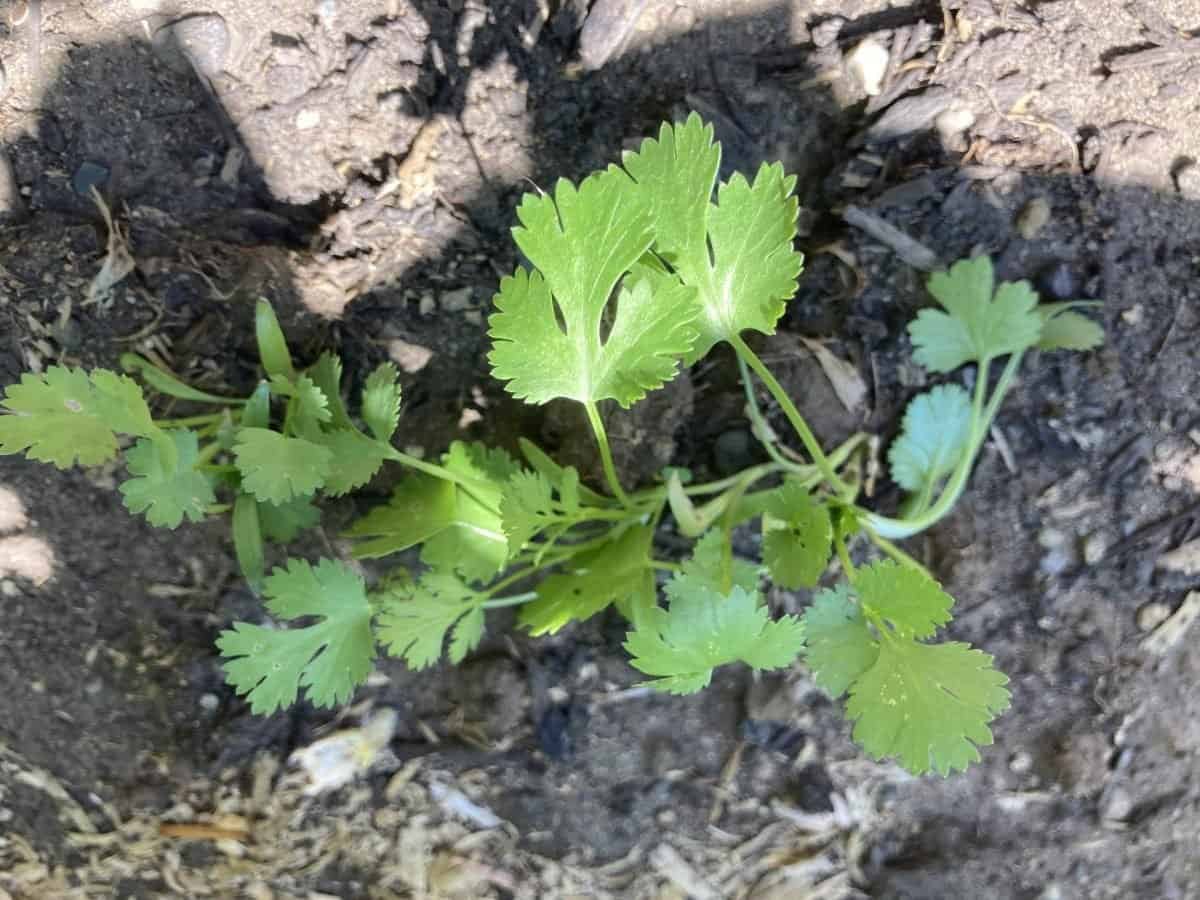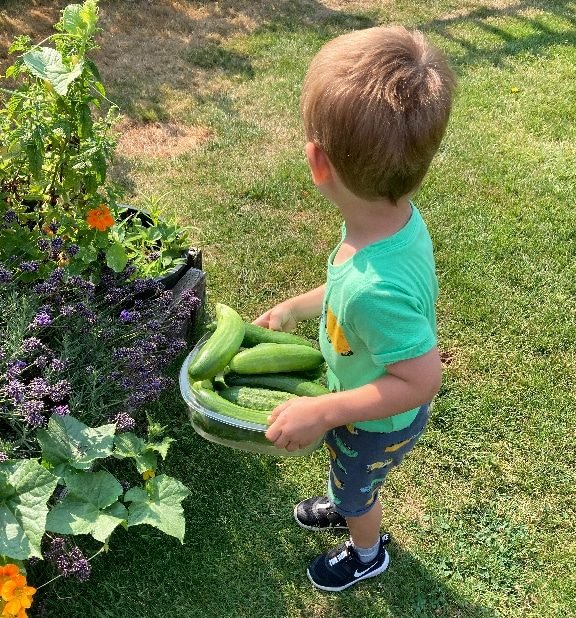How to grow the best Carrots, you must start by loosening up the soil deep enough to allow the Carrots to grow easily. The other key ingredient to growing great-tasting Carrots is providing the correct nutrients to the soil.
This is the largest carrot I have ever grown, when I was cleaning up my tomato plants here in November I found this carrot. Next year I will be planting more carrots around my tomato plants.

I will discuss how to prepare your Carrot bed for planting and some of my favorite varieties, you may have some of your own that you like better and there are so many to choose from so do not limit your plantings to one variety.
Carrots contain beta carotene, fiber, vitamin k1, potassium, and antioxidants. They are a great low-calorie vegetable that can help in weight loss as a crunchy snack and lower cholesterol and improve eyesight.

Some of the newer varieties that are purple on the outside and orange on the inside have been determined to be much healthier for you.
Each of these steps will provide how to grow the best carrots
Preparing the planting bed
Start by tilling or turning over the bed several times as soon in the spring as possible to a depth of 10-12 inches to loosen the soil for the carrots to grow more easily. If you do not believe in tilling, I recommend using a broad fork to loosen the soil.
The bed should have good drainage, anYou you do not want your soil holding too much moisture.
Be sure to remove all debris such as rocks and sticks that could hinder the growth of the carrots.
The soil should have a PH between 5.9-6.5, and be fertile with organic matter. They like alkaline soil; one of the best ways to do this is by adding lime. As with all vegetable plantings, you should mix my recipe for COF with the soil to add the correct nutrient.
Planting Seeds
It is best to plant seeds and not seedlings, carrots do not do well to transplant them. The seeds should barely be covered to germinate (I will share some tips on ways to get better germination), and spaced 1-2 inches apart to allow the carrots plenty of space.
If your plants are too close you can thin them once they have gotten a little larger when the true leaves appear I recommend you use scissors to thin them and not pull those carrots up since you can disturb the roots of the ones you are intending on leaving.
Rows should be 6-10 inches apart.
Keep the carrots moist since they have a very small root system at first, you may need to water them every day.
It is important to keep the carrot bed weeded to allow your carrots to grow freely without competition from weeds.
Germination Tips
Carrots are difficult to germinate, but here are some tips to improve germination.
Premoisten the area that you are planting deep enough so the seeds will not dry out.
Sprinkle your seeds and since the seeds are so small do not be too concerned if they are too close together since you will most likely need to thin them later when true leaves appear.
Using the board method for germination in warmer weather.

You can also use other materials to cover the seeds and allow them to germinate.
Moisten the area again and lay a piece of wood over the top to keep the seeds moist (you do not need to put dirt on top of them).
You will need to lift the board and moisten the area each day and to check for germination. Germination takes 10-14 days, once they germinate you need to remove the piece of wood and cover the seeds with pine or cedar shaving, and wet the area down again. These pine shaving will allow light to the seedlings and also retain moisture. Be sure to keep watering them daily.
Here is a tip to drastically reduce the germination process cutting the time in half.
take a paper plate and cover it with premoistened potting mix, sprinkle carrot seeds on top, and place the plate with seedlings in a ziplock bag. Place the bag in the freezer for 24 hours.
Remove the seedling from the freezer still inside the bag and place it on top of the refrigerator, check daily for seeds to sprout once you see about 50% have sprouted you can plant them by spreading them over the area in the garden. Be sure to premoisten the area you are planting before spreading the seedlings.
Once you have spread the seedlings you can follow the instructions above by covering them with pine or cedar shavings and keep them moistened.
By following these steps you can reduce the time to harvest by 7 days.
Harvesting

In this picture you can see the different varieties and colors I have grown
Most varieties of carrots can be harvested in 55-70 days, best to hold the top of the carrot and leaves in the palm of your hand and pull straight up so that you do not break the carrot off.
To get the most flavorful and sweet-tasting carrots you should start harvesting at the recommended days usually starting at 55-60 days after germinating.
If you allow the carrot plants to flower the sugars that are stored in the carrots will be reduced and the carrots will not be edible. The flowers will attract good bugs to your garden so it is not a bad idea to allow 1-2 plants to go to flower.
Recommended Varieties
Napoli- One of the earliest carrots with a harvesting time of 55 days. The carrot is 6-7 inches long cylindrical and has smooth broad shoulders that have a mild flavor and are very crunchy with deep orange coloring.
Northern Lights or Rainbow- These carrots are multi-colored, purple, yellow, and orange which adds great color to any of your dishes and is a surprise to children when harvesting. These carrots are more slender and typically 5-6 inches long.
The flavor is mild and crunchy and is a great addition to salads for their awesome color.
They need a longer growing season typically 70-75 days.
Purple Dragon- This carrot typically takes 75 days to mature but it is worth the wait. The outside of this carrot is deep purple and the inside is deep orange. This carrot is known for its high anthocyanins. The carrot has a spicy flavor that is great in stir-fries and other dishes.
Little Fingers Heirloom- This is a smaller carrot that is packed full of sweetness and deep orange color. The other good factor is that they can be planted much closer together and will still grow to their full size. This carrot has a shorter duration of 55 days to reach maturity.
If you want to use seed tape for your carrot seeds it will help you to space the seeds and not waste seeds and have to thin them. Another suggestion is to make your own seed tape with toilet paper, Elmer’s glue, and your own carrot seeds.
Get out in your garden and plant rows of carrots this spring to enjoy your harvest in early summer.
This post contains information on how to grow the best carrots and which varieties I believe you and your family would like to eat.




